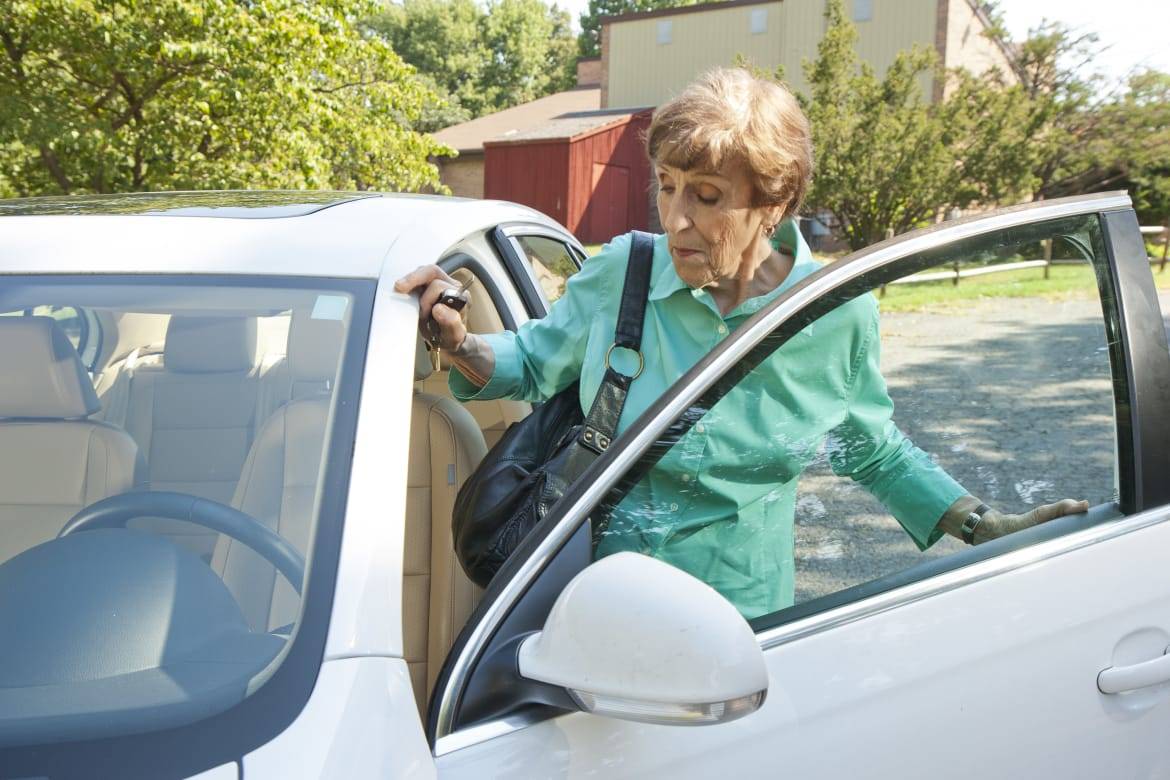Car-Buying Tips for Senior Drivers

CARS.COM — It’s essential that drivers choose cars that fit them, both for comfort and safety, but for the senior population there are additional things to consider.
Related: Program Helps Seniors Find Perfect Vehicle Fit
While there’s no official definition regarding when someone becomes a “senior citizen,” AARP membership is an option as early as age 50, with individuals gaining more discounts as they age. In honor of National Senior Citizen Day on Aug. 21, we talked to a group of drivers who consider themselves senior citizens to see what they focus on when choosing a car. These were the most popular responses:
Safety
Safety was a top priority of the people we spoke to — especially in terms of vehicle accessibility. Tall-riding, large SUVs don’t rate well in this regard; getting up and into the driver’s seat can be a challenge, especially if you have joint and muscle pain, but there’s also a heightened fall risk when trying to get in or out. Sharon Erdmann, 73, has seven grandchildren and three great-grandchildren, and she spends a lot of time riding around as a passenger in SUVs.
“I have a hard time getting up and into the seats, passenger or backseats, even with the extra step [running board] and the hand grip,” she said. “I like my car much better because it’s easy to get in and out.” Erdmann drives a 2004 Mercury Grand Marquis — the second Grand Marquis she has owned.

Take a look at these helpful safety features for mature drivers from the AAA Foundation for Traffic Safety, the University of Michigan Transportation Research Institute, the Hartford Center for Mature Market Excellence and the Massachusetts Institute of Technology AgeLab.
Comfort
It’s important to take into account any physical limitations that might have come up since your last car purchase. Things to consider include joint pain, arthritic hands, range of motion issues and vision limitations. Many cars offer features that can help ease some types of pain and discomfort. Adjustable seats, steering wheel and pedals help drivers find a comfortable and safe driving position while keyless entry and ignition help people who have difficulty twisting a key. Extendable sun visors help shield the eyes of both driver and passenger, and larger audio and climate controls can be more comfortable to use for those with joint pain or arthritis.

Take a look at these adaptive devices recommended by the American Occupational Therapy Association’s Older Driver Initiative.
Technology
Comfort with technology varies from person to person at any age. I’m a millennial, but I prefer less technology and connectivity in my car because I find it distracting. My 55-year-old father, though, enjoys being able to connect his phone using the Bluetooth hands-free calling feature. It comes down to personal preference, and senior drivers should take into account how much technology they want to deal with when they drive. Make sure to check out the tech in cars you’re considering before making a decision.
Caregiving
If you have grandchildren or other family members that you often drive around, it’s important to take that into account when choosing a car. Having a car that kids can get into and out of on their own (or with little help) can make traveling a little bit easier, according to nonprofit senior advocate organization AARP, and it can help you avoid having to contort yourself to buckle the grandkids into their child-safety seats.

Erdmann mentioned that she likes the trunk space of her Grand Marquis, both for groceries and for toting around all the stuff that comes with traveling with children — things such as toys, diaper bags and snacks. The trunk also sits fairly low, making it easier to load and unload everything.
AARP also suggests checking out the EPA-estimated fuel economy of the car you’re considering if you’re planning on driving others around on a regular basis. The organization recommends minivans, compact crossovers and sedans, both for ease of access and better fuel economy when compared with larger SUVs and tall trucks.
Leasing Versus Buying
Leasing could be beneficial for senior citizens on fixed incomes or for those who want a shorter financial commitment. Leases generally have lower upfront costs and lower monthly payments than buying the same vehicle because you’re only paying for the time you have it, and many lease terms last for three years or less. Things can change quickly as we age, so having a shorter time and money commitment can give you the freedom to adapt to unforeseen changes such as severe declines in vision or mobility. While there are termination charges for ending a lease early, you won’t have to deal with selling or trading in the car. And, if you decide you do want to buy the car you’re leasing, you have that option.
Deciding when to hang up the keys for good won’t come easily; here are some tips for how to have “the talk” with your parents or older relatives. This emotionally charged subject won’t be easy to broach, but the conversation will be essential to the well-being of your loved ones.
Featured stories




